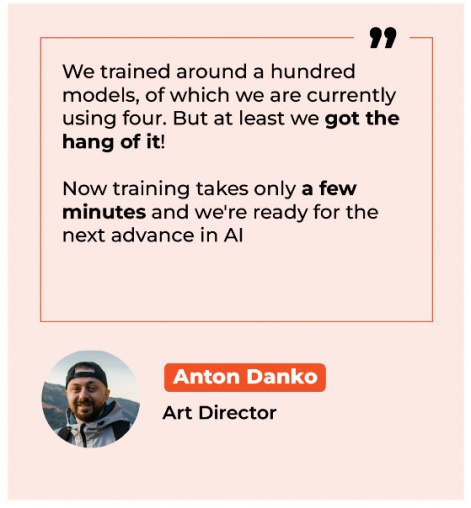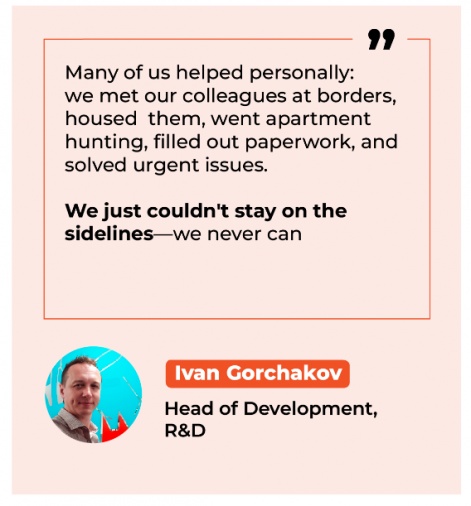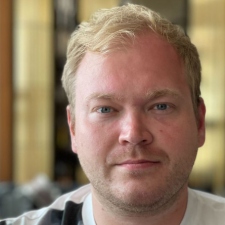The past few years have been difficult for many in the games industry, from layoffs to market changes and massive changes in the world around us. Weathering this storm has significantly impacted many developers and pushed entire studios to the point of closure.
In this guest post, head of development at Belka Games, Ivan Larionov, shares the studio’s journey over the past three years. Not only did the team have to weather the storm of the pandemic, but also war. Here’s how the studio tackled testing times and emerged stronger on the other side.
When the market is on the rise, success becomes a simple equation: experience plus effort multiplied by time. Starting in late 2017, our metrics went through the roof. During the next three years, we tripled our staff and created an R&D department, all thanks to our team’s expertise and dedication.
But what do you do when the market falls, and the entire world seems like it’s going a bit crazy?
Right now, we have four active projects, three of which are the brainchildren of the R&D department. At first, it was this department that we wanted to write about: how we released a new project, Roger That!, and the know-how we used in the process (and it was a lot). But while I was writing about R&D, I realised that everything is closely connected to Belka’s established traditions and the choices we’ve made throughout our company’s history.
So, I decided to expand beyond that topic.
Over the last three years, we have survived the Covid-19 pandemic, protests, war, mass relocation, and privacy policy changes (App Tracking Transparency). At the same time, we started taking risks more often, decided to explore new markets, and tripled the size of the R&D department – all of which occurred not because of the situation but in spite of it.
I tried to understand what helped us not just stay afloat but rise above all the chaos that was going on. Now, I’m sharing my conclusions with you. Maybe they will resonate with someone.
#1: Courage
By the start of 2022, Belka Games had three active projects: Clockmaker, Solitaire Cruise, and Bermuda Adventures, the latter two of which were launched by R&D.
Clockmaker is a long-lived project with an established audience. Solitaire Cruise was released in 2020, during Covid-19 pandemic, when mobile games were experiencing unprecedented growth. Bermuda Adventures, in turn, was only just getting on track, and we had to maintain a stable generation of new content. We had planned to release another project, but the final few attempts were unsuccessful. Over a year, R&D tested several hypotheses, but none of them reached the KPIs needed to soft-launch the project.
Then the war started. Problems we had never dealt with before started piling up on our management team. Three countries where we were present were affected by what was happening. We had to relocate people, help them financially, and address personal needs on a case-by-case basis, all without letting our productivity drop to zero.
Back then, the R&D Department was small and worked in a single stream. In other words, the team was developing one game. Success meant a project was prepared for a global launch; failure meant it was archived, and the team moved on to the next one. But it takes two or three months to develop a playable prototype. What if three projects in a row fail? What if four fail?
We decided to scale up the department to three or four parallel streams. That way, we would reach a successful hypothesis faster. It sounded difficult and, under the circumstances, completely impossible. But we had to deal with it sooner or later. Why not now?
Based on our preliminary assessment, the team was supposed to triple in size, meaning two-thirds of the staff would come from outside. Originally, R&D hinged on three pillars: culture, creativity, and speed. But, with these changes, the team’s values could become unclear, so we decided to stick to one rule: no matter what happens, we keep the R&D mindset and actively communicate it.
Building a system on a tight schedule with only newcomers would have been tough. Therefore, we decided it would be better if we borrowed part of the team from our active products. We needed people who we were used to working with, whose strengths and weaknesses we knew. We enlisted strong specialists from each project while trying not to disrupt their processes and plans.
Our employee rotation went well, and our teams were accommodating. First, we assembled one team, then two, and then one more. Over two and a half months, the department reached the desired size.
#2: Flexibility
Neural networks have indeed turned everything on its head: ChatGPT, DALL-E, Midjourney. In our company, the Art Department was the first to change its processes. Our specialists began exploring the options on the market, watched webinars, and came up with use cases. They tested the new approaches on one of our projects, and pretty soon, the testing yielded fantastic results. We made some pipelines four times shorter.
These specialists became evangelists within the company: they started a Slack channel and led a number of webinars for Belka Games employees. This prompted us to create a separate AI department for them to analyse our projects, prepare infrastructure, processes, and pipelines for deploying AI, and implement the new tools.
The department was given a manager. At first, the team planned to implement AI into art pipelines, but later on, they also added QA, UI, development, all text models, localisation, and creatives. All in all, they didn’t limit themselves to one area but decided to explore everything. Now, we have neural networks hooked up practically everywhere. Not as turnkey solutions – art, for example, always undergoes post-processing -but at the level of concepts.

#3: Solidarity
Company culture is very important to us. When building teams, we focus first and foremost not on hard skills but on mindset. This affects the team atmosphere as well as difficult and ambiguous situations.
Here’s an example.
As I mentioned, we enlisted people from active projects to staff the R&D Department. We tried to act with precision and not disrupt important pipelines, but our reshuffling still created new concerns for producers, like finding replacements and helping newcomers settle in. Even so, everyone was always accommodating. Our producers understood that it was important to help R&D now and didn’t try to hog the blanket.
Or let’s take relocation as an example. In early 2022, we relocated 180 employees practically at the same time. We compiled lists of relocatees, discussed plans, ordered charters, and provided financial support. We met Ukrainians at the border control point near Poland at night. For those who relocated, we rented hotels and assisted them with money so they could get settled. Under emergency conditions, we established legal entities in Montenegro, Georgia, and Poland, even though sometimes we didn’t even have time to delve into the details.

Later, we and our leads discussed everything that happened and agreed that the hardest part wasn’t getting through the production load. Don’t get me wrong – there was plenty of work. However, the most difficult thing was coming into contact with each person’s story because, when you’re helping, you always become emotionally invested in the situation.
But there were also funny moments. For example, I had never thought about how to transport a snake across a border. Or a raccoon. Or a porcupine. But I had to learn.
People understood that they were in safe hands and would have support during a difficult time because it’s the humane thing to do. In the short term, again, this approach didn’t earn us money. In fact, it’s hard to say how much the company spent on relocation. But in the long term, we ended up with a united team and a high level of trust, which are things money can’t buy.
#4: Determination
Every time a new project was prepared for a global launch, a part of its team went with it. Each of our projects had a different technical framework. This complicated employee rotation: when people changed positions, they required extensive onboarding for a month or two – time that was irretrievably lost. This would have had an especially critical impact on the R&D Department, which we were planning to expand, because speed and mobility are extremely important to it, and we couldn’t afford to lose these qualities.
At the same time, our long-standing dream of building a modular development system was coming to fruition. We had done a massive amount of groundwork at all levels. With working modules, assembling games could be like building a construction set. We had tried to build it more than once but ran into new obstacles each time.
With the experience gained from unsuccessful cases, I set off to build processes. We created the basic architecture and used it as the foundation for a template with ready-made frameworks, plug-ins, and so on. Simultaneously, we designed a modular structure based on the architecture. The modules were composed of what we were working on in the project at that moment. Three teams, three projects, each feature transferred to a module, and all this in real-time.
It was a lot of technical work, but ultimately, we did it. We developed both the basic architecture and the modular system with necessary and optional modules. It didn’t have bells and whistles or pretty packaging, but it all worked, and the modularity yielded great results from the start. Rotating our specialists was easy, and we transferred features from one project to another without any trouble.

For example, we put together Roger That!, our new project, in three and a half months, and that is despite the fact that we tested the modular system and the architecture on it. Thanks to this optimisation, we could devote more time to developing the art, fleshing out the UI, and so on.
We will discuss that project in more detail later – we’re planning an entire long read since it was an exciting adventure. But for now, I’ll just say we in R&D achieved all our goals. We put together teams, expanded the department, retained our mindset, and implemented modularity. And after a worldwide release, Roger That! is now yielding encouraging metrics.
#5: Always growing
The industry is going through a crisis. This means we need to close up shop, be flexible, and adapt.
With each year, it’s getting harder to expand user acquisition through the old channels. That’s why we decided to look closer at our channels of communication with the audience. For these and many other challenges, we created the Publishing Department. Over a year, this team has completely rethought our approach to working with the community.

The team is also constantly analysing the profitability of different geographic areas and studying which of our projects would be most effective to adapt to new regions.
For example, Japan is the third top-grossing country in mobile gaming. After several studies, we realised that Clockmaker is perfectly suited for scaling in the region and started to prepare it for the Japanese market. We aren’t limiting ourselves to localisation. We’re doing complete naturalisation and culturalization. We’re improving fonts, adapting the FTUE, creating a calendar of events in the region, developing unique creatives, promoting the product brand, and strengthening our presence on social networks popular in the country.
With each global release, we have honed our processes so that everything, from art to marketing campaigns, meets our criteria for quality and gets launched on time. It didn’t happen without effort or mistakes, but that’s usually the case when you try something new. However, we wanted to meet the release of Roger That! head-on. After all the upheaval, we didn’t want to and couldn’t lose a minute of time. That’s why, long before its global release, we started making checklists for each area: game design, art, animation, development, QA, and community and support infrastructure.
A global release isn’t rocket science, but the most important thing is to consider all the details. While preparing Roger That! for a global release, we changed and adapted many processes. These adjustments also helped us put the project into operation on a permanent basis more smoothly.
As a result, the release of Roger That! was the smoothest of all our projects. So much so that I caught myself thinking, “It’s too quiet. Something is definitely wrong.” Then I double-checked everything.
Now we’re not afraid of overlooking something because everything is securely documented in our processes. I hope everything will go just as seamlessly with future projects. I can’t say I’m grateful for everything that has happened to us, but in some sense, it spurred us to improve.
Final thoughts
Protests, Covid, war, relocation – but we kept working and even helped our projects grow. We retained our employees, helped them relocate, and supported them during a difficult time.
I wrote about five components of success, and they are undoubtedly important. But neither the company nor our projects would exist if it weren’t for the people who did their job every day as best they could. So, I want to give a shout-out to everyone at Belka, wish them luck in the year ahead and say if we can do it, others can too.
Edited by Paige Cook

